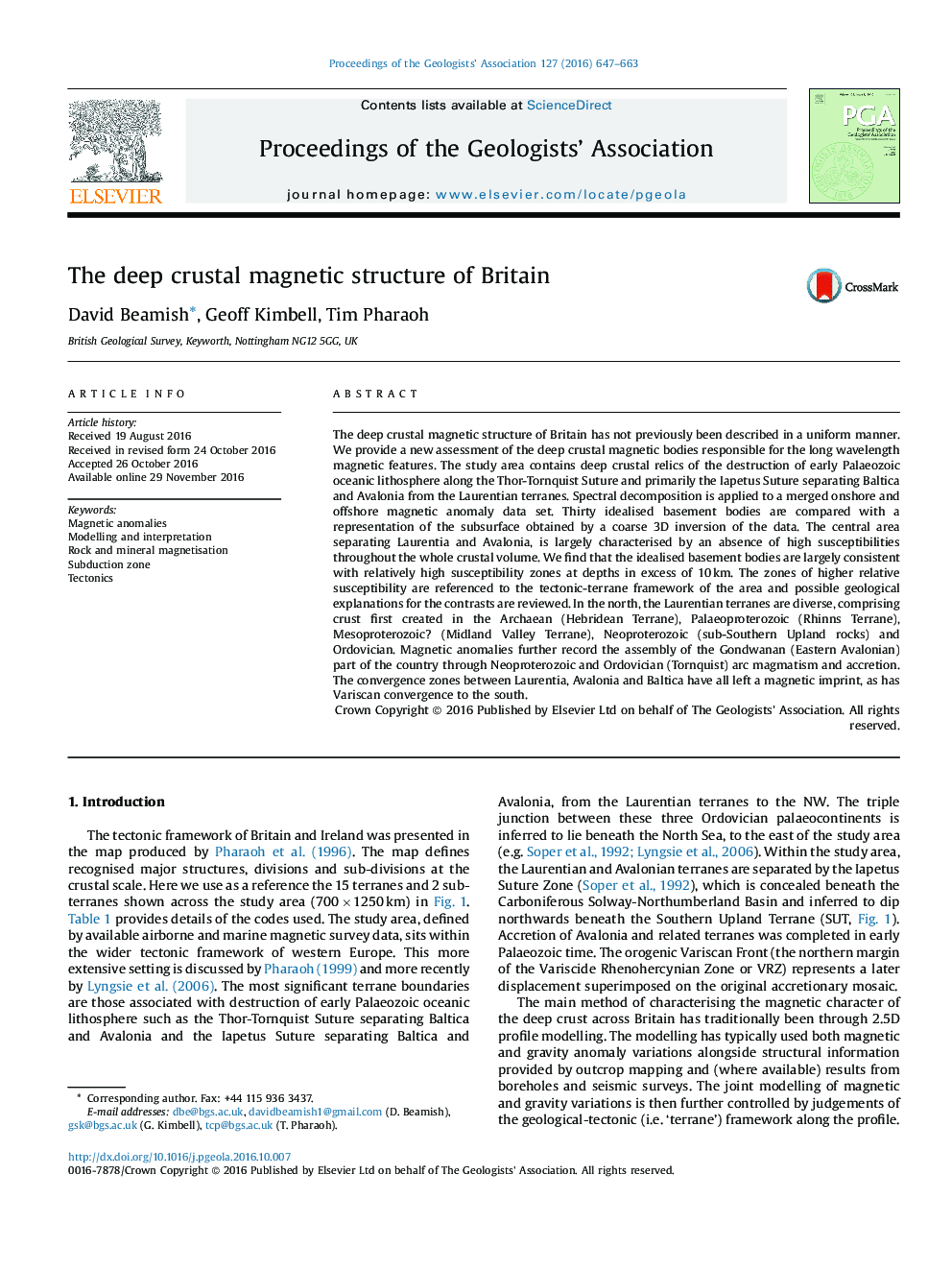| Article ID | Journal | Published Year | Pages | File Type |
|---|---|---|---|---|
| 5786452 | Proceedings of the Geologists' Association | 2016 | 17 Pages |
Abstract
The deep crustal magnetic structure of Britain has not previously been described in a uniform manner. We provide a new assessment of the deep crustal magnetic bodies responsible for the long wavelength magnetic features. The study area contains deep crustal relics of the destruction of early Palaeozoic oceanic lithosphere along the Thor-Tornquist Suture and primarily the Iapetus Suture separating Baltica and Avalonia from the Laurentian terranes. Spectral decomposition is applied to a merged onshore and offshore magnetic anomaly data set. Thirty idealised basement bodies are compared with a representation of the subsurface obtained by a coarse 3D inversion of the data. The central area separating Laurentia and Avalonia, is largely characterised by an absence of high susceptibilities throughout the whole crustal volume. We find that the idealised basement bodies are largely consistent with relatively high susceptibility zones at depths in excess of 10Â km. The zones of higher relative susceptibility are referenced to the tectonic-terrane framework of the area and possible geological explanations for the contrasts are reviewed. In the north, the Laurentian terranes are diverse, comprising crust first created in the Archaean (Hebridean Terrane), Palaeoproterozoic (Rhinns Terrane), Mesoproterozoic? (Midland Valley Terrane), Neoproterozoic (sub-Southern Upland rocks) and Ordovician. Magnetic anomalies further record the assembly of the Gondwanan (Eastern Avalonian) part of the country through Neoproterozoic and Ordovician (Tornquist) arc magmatism and accretion. The convergence zones between Laurentia, Avalonia and Baltica have all left a magnetic imprint, as has Variscan convergence to the south.
Related Topics
Physical Sciences and Engineering
Earth and Planetary Sciences
Geology
Authors
David Beamish, Geoff Kimbell, Tim Pharaoh,
